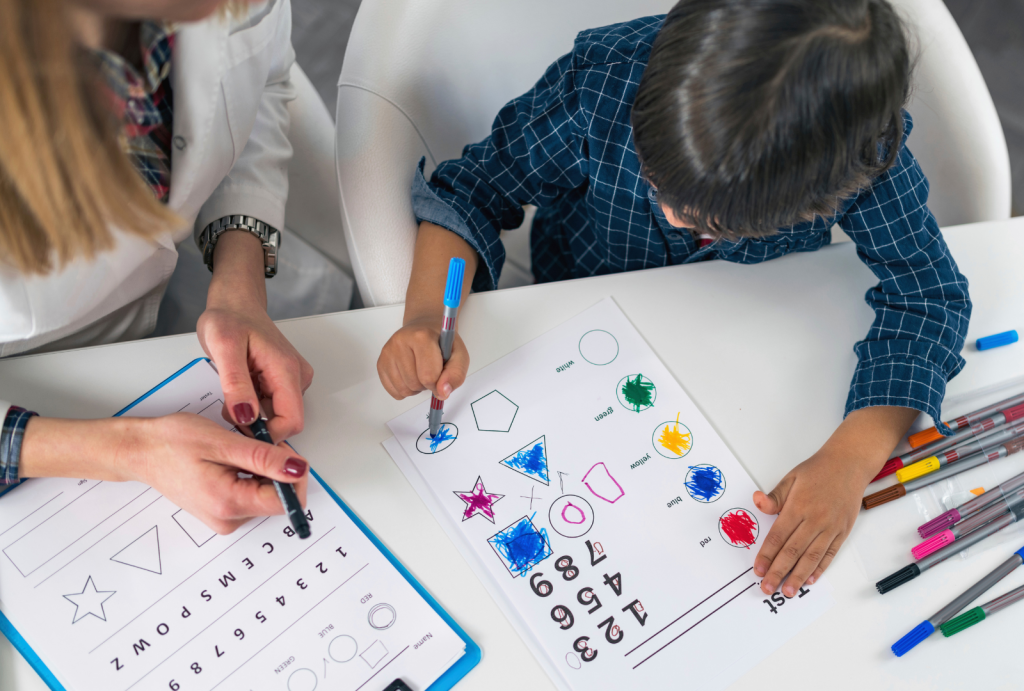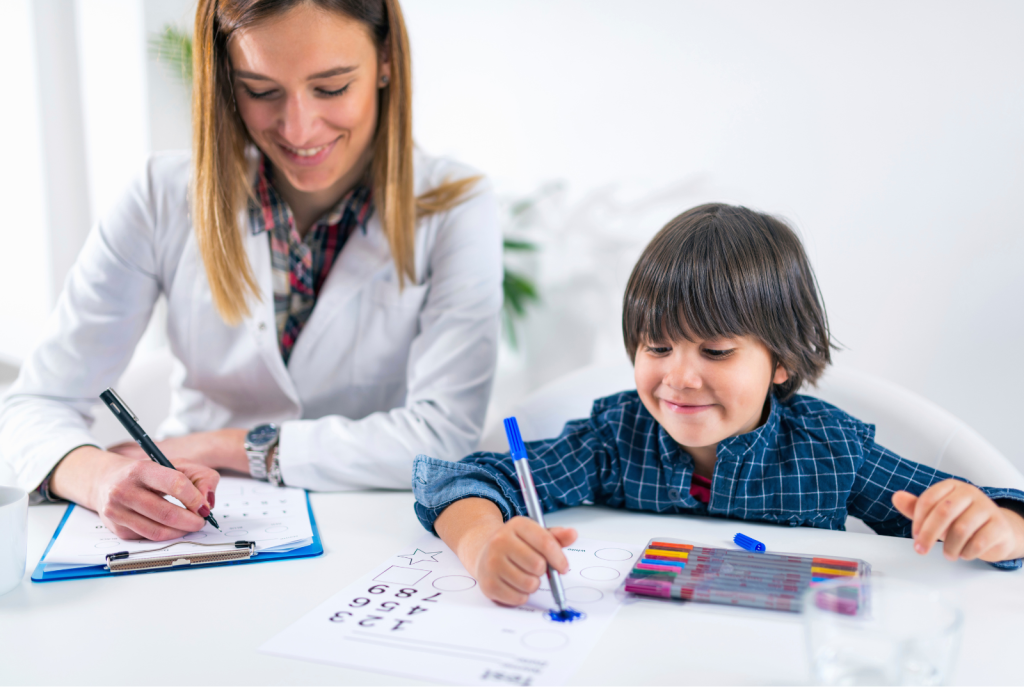Coloring is often seen as a fun activity for children, but its benefits go far beyond simply passing the time. Coloring has a profound impact on a child’s psychological well-being, helping them develop emotionally, cognitively, and behaviorally. But how can coloring embrace a child’s psychology? From enhancing emotional expression to reducing stress, coloring supports children’s mental and emotional growth in ways that are both subtle and powerful.
Understanding the Psychological Impact of Coloring

Coloring is more than just an artistic endeavor. It taps into key areas of a child’s psychology, fostering development that enhances their overall mental health. Here’s how coloring affects various aspects of a child’s psychological well-being.
1. Emotional Expression and Regulation
For many children, expressing emotions verbally can be difficult, especially when they are young and still learning how to communicate their feelings. Coloring provides children with a non-verbal outlet for expressing their emotions. The colors they choose and the way they fill in a page can reflect their emotional state.
- Safe Emotional Outlet: Coloring allows children to project their feelings onto the page without having to articulate them in words. For example, a child who is feeling angry might choose dark or intense colors, while a happy child might gravitate toward bright, cheerful colors.
- Emotional Regulation: As children color, they engage in a calming, repetitive activity that can help them manage and regulate their emotions. This activity promotes a sense of control and helps children process difficult feelings in a healthy way.
2. Stress Relief and Relaxation
One of the most significant psychological benefits of coloring is its ability to reduce stress. Much like adult coloring books that have gained popularity for their calming effects, children also benefit from the repetitive motions and focus required for coloring. This soothing activity can help them unwind and relax after a stressful day.
- Mindfulness Practice: Coloring requires focus, which helps children stay present in the moment. This mindful engagement can lower anxiety and promote a sense of calm.
- Stress Reduction: The simple act of coloring can help children clear their minds, focus on the task at hand, and temporarily set aside worries or concerns.
3. Boosting Self-Esteem and Confidence
Coloring also plays an essential role in building a child’s self-esteem and confidence. When children complete a coloring project, they feel a sense of accomplishment, which boosts their confidence in their abilities.
- Sense of Achievement: Completing a coloring page gives children a tangible result that they can be proud of, reinforcing their belief in their capabilities.
- Encouraging Independence: Coloring is often a self-directed activity, allowing children to make their own choices about colors and designs. This independence fosters confidence in their decision-making abilities.
4. Cognitive and Problem-Solving Skills
Coloring challenges children to think critically and solve problems. While choosing colors and deciding how to approach a coloring page may seem simple, it involves a level of cognitive processing that enhances problem-solving skills.
- Color Choices: Children must decide which colors to use and how to apply them, helping them develop decision-making and critical thinking skills.
- Pattern Recognition: Coloring activities that involve complex patterns or shapes require children to recognize and process those patterns, supporting cognitive development.
How Can Coloring Foster Psychological Growth?

How can coloring embrace a child’s psychology? The act of coloring fosters psychological growth by providing children with the tools they need to express themselves, regulate their emotions, and develop essential cognitive and social skills.
1. Enhancing Creativity and Imagination
Coloring is an inherently creative activity, allowing children to tap into their imaginations. This freedom to express themselves through color helps children develop their creative thinking abilities.
- Creative Freedom: There are no rules in coloring. Whether children decide to color outside the lines or use unconventional color combinations, they are exercising their creativity without boundaries.
- Expanding Imagination: Coloring allows children to explore different ways of thinking and envisioning the world, which encourages imaginative play and creative problem-solving.
2. Developing Focus and Patience
Coloring is an activity that requires concentration and patience. For children, learning to stay focused on a task for an extended period can be challenging, but coloring helps them develop these skills in a fun and engaging way.
- Improved Focus: Staying within the lines and completing a coloring page requires attention to detail, which enhances a child’s ability to concentrate on tasks.
- Building Patience: Coloring is a slow and deliberate process. Children must practice patience as they work to complete their projects, which is a valuable skill in both academic and personal settings.
3. Social and Emotional Learning
Coloring is not only a solitary activity—it can also be a social one. When children color with others, they learn important social skills, such as sharing, cooperating, and communicating.
- Collaborative Play: Group coloring activities encourage children to work together, share materials, and exchange ideas, which promotes positive social interactions.
- Understanding Emotions: Through coloring, children can also learn about emotions, both their own and those of others. Group discussions about their coloring choices can foster emotional intelligence and empathy.
Why Coloring Is Therapeutic for Children
Coloring can be especially beneficial for children who are struggling with anxiety, behavioral issues, or emotional trauma. Art therapy, which includes coloring, is often used as a therapeutic tool to help children process their feelings and cope with difficult experiences.
1. Non-Verbal Expression of Trauma
For children who have experienced trauma or have difficulty expressing their emotions verbally, coloring can provide a non-threatening way to communicate what they’re feeling. The colors they choose and the intensity with which they apply them can offer insight into their emotional state.
- Trauma Healing: Coloring allows children to express feelings that they might not be able to articulate through words, helping them process traumatic experiences in a safe and controlled environment.
- Emotional Release: The repetitive, soothing nature of coloring helps children release pent-up emotions and find calm.
2. Helping with Behavioral Issues
Children who struggle with behavioral issues, such as ADHD, often benefit from the focus and structure that coloring provides. Coloring helps these children channel their energy in a productive way while also promoting relaxation and reducing impulsive behavior.
- Focus and Attention: For children with attention difficulties, coloring offers a structured activity that requires sustained concentration, helping them develop better focus.
- Reduced Impulsivity: Coloring provides an outlet for restless energy, allowing children to engage in a calming, repetitive activity that can help reduce impulsive actions.
Conclusion
How can coloring embrace a child’s psychology? Coloring serves as a powerful tool for supporting a child’s emotional, cognitive, and psychological development. By offering a safe outlet for emotional expression, promoting relaxation, and fostering important cognitive and social skills, coloring plays a significant role in a child’s mental and emotional growth. Whether it’s helping children manage stress or boosting their self-confidence, coloring is more than just an art activity—it’s a key component of healthy psychological development.
FAQs
How does coloring help children express their emotions?
Coloring provides a non-verbal way for children to express their emotions. The colors they choose and how they apply them reflect their emotional state, helping them process feelings they may not be able to verbalize.
Why is coloring therapeutic for children?
Coloring is therapeutic for children because it promotes relaxation, reduces stress, and provides an outlet for emotional expression. It is often used in art therapy to help children process trauma and difficult emotions.
How does coloring improve focus in children?
Coloring requires sustained attention and patience, helping children develop better focus and concentration over time. This is especially helpful for children who struggle with attention difficulties.
Can coloring help children with behavioral issues?
Yes, coloring can help children with behavioral issues by providing a structured, calming activity that promotes focus and reduces impulsive behavior. It is often used as a therapeutic tool for children with ADHD or other behavioral challenges.
